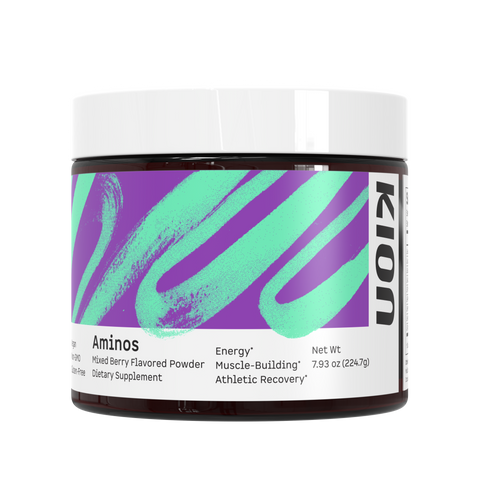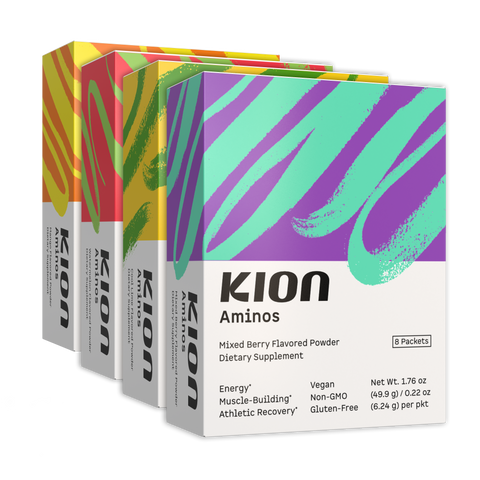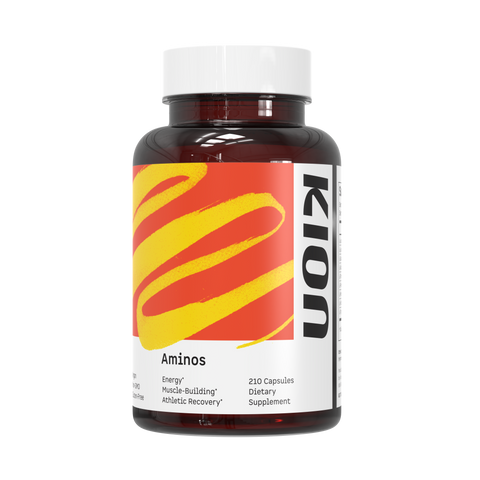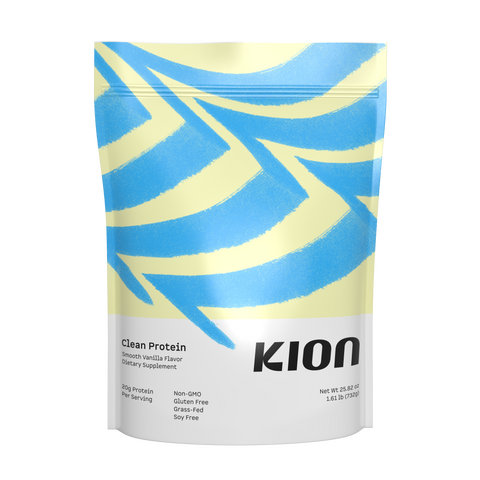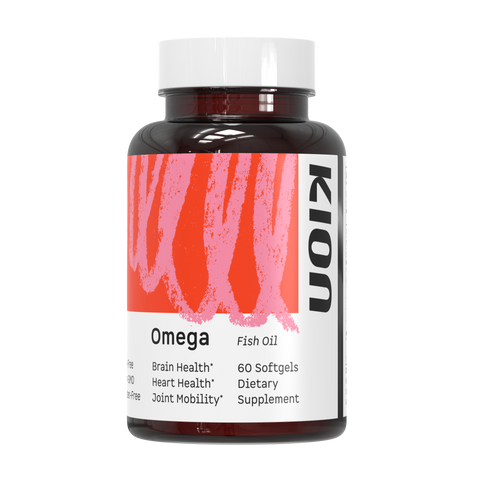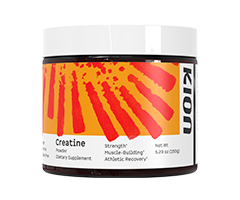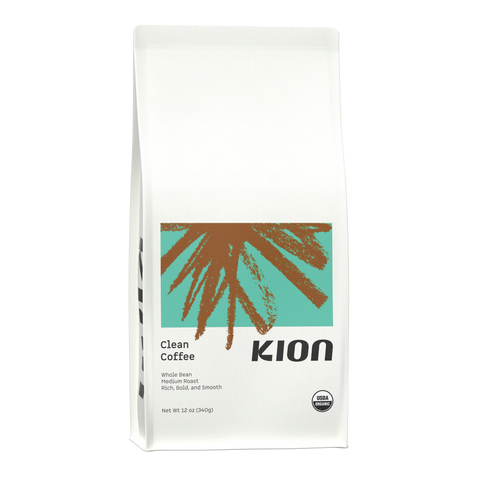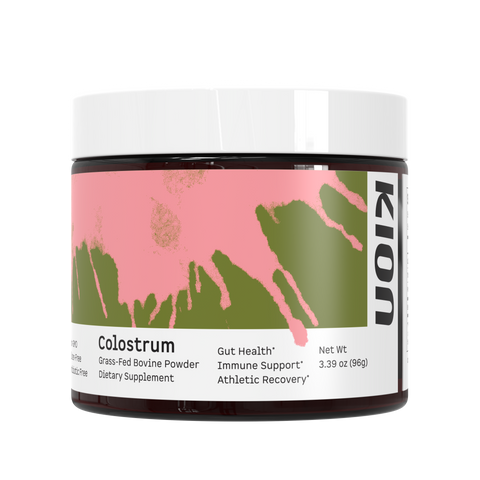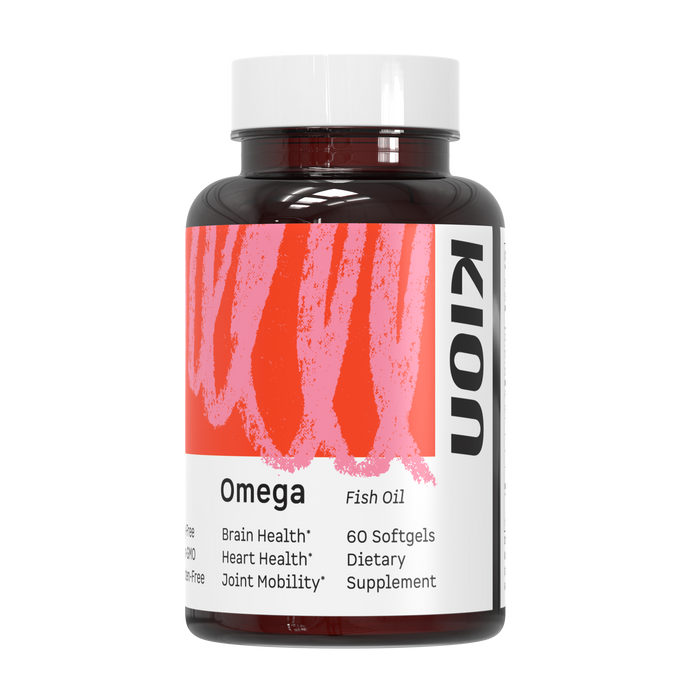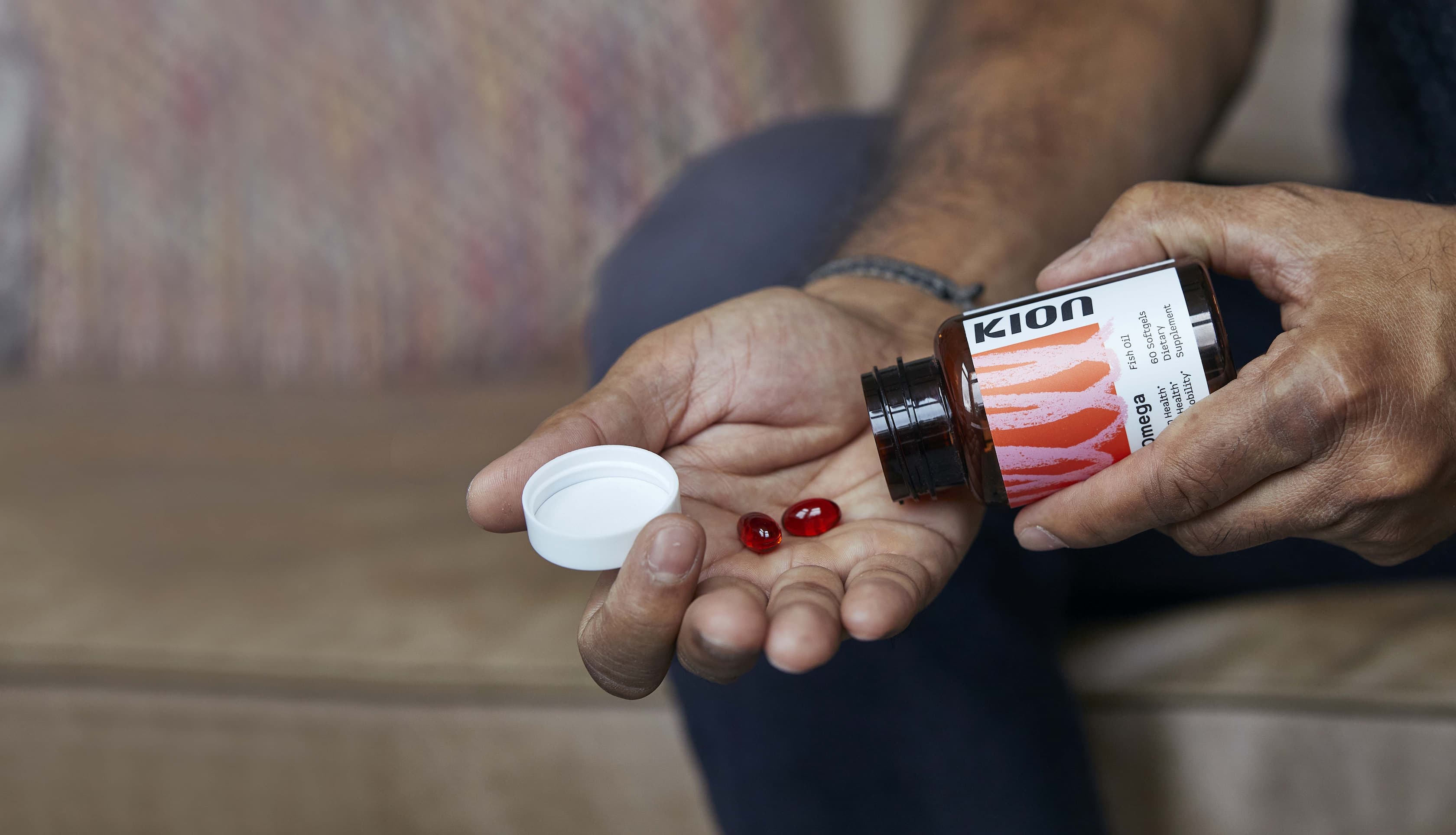Even if you're just starting on your health journey, chances are you've heard of omega-3s: the fatty acids that make fish so healthy for us.
So, as a way to improve your health, you're eating more fish. But this can get expensive...And maybe you're not the biggest fan of tilapia.
Then, your health-nutty friend, Brad, starts telling you to take "fish pills" instead (he means fish oil).
While skeptical of putting food in a pill, you start doing your research to find out if these fish oil evangelists are actually snake oil salesmen.
And now you're here. At the last resource you'll ever need on fish oil.
Because the truth is, there are legitimate, science-based reasons to add fish oil to your daily supplement routine if you're interested in improving your health.
After reading this article, you’ll have no-nonsense answers to all of your omega-3 and fish oil questions.
Better yet, you’ll be able to decide if supplementing with fish oil makes sense for you.
What Are Omega-3s and Why Do They Matter?
Omega-3s are a family of polyunsaturated fats referred to as essential fatty acids—EFAs for short. They’re essential because our bodies cannot make them. We must get them from our diets.
The omega-3s that get the most press are eicosapentaenoic acid (EPA), docosahexaenoic acid (DHA), and alpha-linolenic acid (ALA). Of these three, EPA and DHA are the most crucial for our health.
EPA and DHA are the building blocks of our cell membranes—the semipermeable outer layer that protects every cell in our body.
Sounds like a big deal, yes? Indeed, it is.
Let’s zoom in to the cellular level to get a better understanding.
How Omega-3s Build Your Cells
You’ve heard the saying, “you are what you eat,” right?
Well, this is especially true when it comes to cellular membranes. When we consume dietary fat, a large portion goes directly to building these critical structures, which:
- Absorb nutrients
- Expel waste and toxins
- Facilitate communication between cells
Healthy cell membranes are built from the DHA and EPA we get from our diet. These cellular building blocks promote flexibility and permeability—the qualities we want in a good cell membrane.
In the absence of DHA and EPA, our cell membranes are made from the saturated fat and omega-6 fatty acids we eat. This results in stiffer and less permeable cell membranes, which inhibit cellular function. Too many omega-6s can also contribute to higher levels of inflammatory markers in the body.¹
This is not to say that saturated fat and omega-6s are bad. Like omega-3s, both serve necessary functions in the body. When consumed in healthy ratios, all fats work together to promote optimal health in various ways.
But here’s the catch: typically, we need more omega-3s than omega-6s.
This is bad news for anyone following a Standard American or Western diet, which has too many omega-6s and too few omega-3s. And of the omega-3s we do eat, we’re often missing the ones that are rich in DHA and EPA.
In sum, if we want our cells to function like well-oiled machines, we need to actually oil them by consuming omega-3 rich foods with high amounts of DHA and EPA.
What You Should Know About Omega-3s
Many health seekers understand the importance of the omega-3:omega-6 ratio, and make an effort to increase their intake of omega-3s and other “healthy fats.”
But we often make one critical mistake: we incorrectly assume that all omega-3 rich foods are equally high in DHA and EPA. But they’re not.
“Healthy fats” like olive oil, avocados, nuts, and seeds are good sources of one omega-3 in particular: alpha-linoleic acid or ALA.
ALA is a “parent” omega-3 because it converts into DHA and EPA. However, the amount of EPA and DHA we get from ALA is marginal, at best.²
Omega-3s high in ALA are generally healthy and put tons of points on the scoreboard when balancing out omega-6s. But they’re inadequate at delivering the DHA and EPA that we most critically need.
So if you want to improve your health, focus on incorporating specific foods high in DHA and EPA.
And if consuming those foods proves to be impractical or too costly, you need to know how to select the right omega-3 supplement with sufficient DHA and EPA amounts.
Now, it’s important to know we can survive with low levels of DHA and EPA. But many facets of our health may improve when we increase our consumption of these two omega-3s.
Assuming you’re more interested in thriving than just surviving, let’s examine all the ways DHA and EPA can improve our health and quality of life.
The Health Benefits of Omega-3s
Because of their foundational role in the body, DHA and EPA can impact many different parts of our biology, including but not limited to:
- Joints
- Nerves
- Circulation
- Brain health
- Skin and hair health
- Cardiovascular health
While their benefits are many, there are a few key areas where DHA and EPA shine.
Omega-3s Can Boost Athletic Recovery
If you struggle with sub-par exercise recovery, achy joints, or excess soreness from exercise, omega-3s can help.
A recent randomized, double-blind, placebo-controlled study on healthy young men showed exciting results from eight weeks of omega-3 supplementation (600mg EPA, 260mg DHA).³
The authors of the study concluded that DHA and EPA supplementation might speed recovery by reducing the amount of time it takes for muscles to adapt to a training stimulus. Compared to the control groups, those supplementing with DHA and EPA returned to peak strength and full range of motion faster and reported less post-exercise soreness.
Another study using a much higher dose (1.86g EPA, 1.5g DHA) showed omega-3s stimulated muscle protein synthesis in older adults.⁴ Meaning omega-3s may help build muscle, as well!
Omega-3s Support Brain Health (Mood and Memory)
The benefits of omega-3 fatty acids aren’t just physical—they support our mental state and brain health, as well.
A systematic review and meta-analysis on aging adults reported improvements in memory with DHA and EPA supplementation (1 gram/day)."⁵
In another randomized control trial, participants 21-29 years old were given 2085mg EPA and 348mg DHA per day.⁶ The researchers noted omega-3 supplementation improved brain health markers and mood—even in healthy, young adults.
Omega-3s May Improve Heart Health
Omega-3s also appear to have positive effects on the cardiovascular system.
Based on a meta-analysis of randomized controlled trials, supplementation of 0.45-4.5 grams/day “significantly improves the endothelial function."⁷
In non-doctor speak, this means omega-3s help with the functioning of blood vessels in the heart.
Other Potential Benefits
Although more clinical research is needed, some promising studies suggest DHA and EPA supplementation may promote healthy joints, eyes, and triglycerides levels.
Healthier Joints
EPA and DHA support a healthy response to inflammation, which may positively affect the swelling, pain, and stiffness associated with joint problems or over-use.⁸
Better Eye Lubrication
Fish oil is often recommended to those with dry eyes. Although the research is mixed, several studies show that DHA and EPA supplementation may improve general eye lubrication.⁹ ¹⁰ ¹¹
Improved Triglyceride Levels
Triglycerides are a crucial indicator of heart health, and high doses of DHA and EPA may have a positive effect on triglyceride levels.¹²
In sum, the research suggests that DHA and EPA supplementation benefits may be wide-ranging.

So, let’s take a moment to recap:
DHA and EPA are the “MVOs” (most valuable omegas) with all-star caliber health benefits. And we all can benefit from adding more of them to our dietary roster.
However, consuming more non-specific omega-3s won’t necessarily give you the benefits you’re looking for, because most foods high in omega-3s are only high in ALA. This means that the amount of DHA and EPA they provide is negligible.
So, which foods are high in DHA and EPA?
Let’s take a look at the menu.
What Foods Are High in DHA and EPA?
DHA and EPA are primarily available in marine algae and animals that eat marine algae. This means our whole food options are limited to aquatic plants, fish, and marine mollusks like oysters, mussels, and clams.
Don’t eat a lot of algae, fish, or mollusks? You’re not alone.
A recent survey published in 2019 found that Americans’ consumption of DHA and EPA was below recommended levels across all age groups.¹³
But how much seafood should we eat to get the DHA and EPA we need?
The Dietary Guidelines for Americans recommends consumption of about 8 ounces per week of a variety of seafood, which provides an average consumption of 250 mg per day of DHA and EPA.
To make this actionable, the USDA suggests that adults eat at least two fatty fish servings per week or aim to make fish at least 20% of our overall protein consumption.¹⁴
But compared to other dietary staples, fish is not commonly consumed in Western households for several reasons:
- Fish and seafood is expensive
- Many people don’t like the flavor and texture
- Depending on one’s location, fresh fish may be challenging to find
Additionally, conscious consumers are worried about:
- Increasing levels of mercury toxicity in fish¹⁵
- The environmental and ecological impacts of fish sourcing¹⁶
- Over-fishing practices that decrease supply and increase price¹⁷
With so many obstacles and concerns, it’s easy to pass on the fish and reach for some walnuts.
But in doing so, we miss out on the primary dietary source of DHA and EPA. And as we’ve learned, being deficient in these fatty acids has a cost, and our health and performance pay the price.
What if we can get the benefits of eating fish without...eating fish?
Why You Should Supplement with Fish Oil
Supplementing with fish oil is the fastest and most convenient way to get DHA and EPA without having to buy, prepare, and eat fish.
But not all fish oil supplements are created equal, and it pays to be picky.
Inferior fish oil supplements underdeliver on DHA and EPA, are prone to going rancid (which causes more harm than good), and may contribute to overfishing and environmental degradation.
Here are some tips for avoiding bad fish oil.
How to Find the Best Fish Oil
Here are the most important things to consider when shopping for fish oil.
Sourcing and Sustainability
Look for fish oil supplements that source from small, cold-water fish.
Small fish like anchovies and sardines are lower on the food chain, are naturally low in toxins such as mercury, and are high in DHA and EPA.
Additionally, support a formulator that practices sustainable fishing and adheres to regulatory bodies or guidelines.
Triglyceride Form
Check to make sure the fish oil is in the triglyceride form.
Many commercial fish oils are sold as ethyl esters. But omega-3s are naturally found in fish in their triglyceride form, which is more bioavailable to the human body.
Research shows that fish oil in triglyceride form is absorbed 70% more than ethyl esters.¹⁸
Natural Preservatives
Fish oil is susceptible to rancidity, which occurs when the omega-3s are broken down by exposure to air, light, and heat.
To prevent oxidation, choose a fish oil supplement that contains preservatives, preferably natural antioxidants.
Kion Omega Meets These Standards, and More
We are dedicated to creating the highest quality supplements, which is why Kion Omega checks all of these boxes (and then a few more).
Kion Omega is:
- In triglyceride form for superior absorption
- Naturally preserved with antioxidants from rosemary and astaxanthin
- Made from sustainably sourced cold-water anchovies
Each serving of Kion Omega packs 1000mg (1 gram) of highly concentrated Omega-3s. Here’s the breakdown:
- 530mg EPA
- 435mg DHA
- 35mg Other Omega-3s
That’s over 200% of your recommended daily intake of DHA and EPA in one serving!
"I have been taking Kion products for several months now and I am loving them. The fish oil is high quality with several ingredients added to preserve the oil, which is a big concern for me."
- Tony R (verified buyer)
Still got fish oil questions? We’ve got answers.
Common Fish Oil Questions
What’s the best time of day to take fish oil?
Fish oil is best absorbed when taken along with food. The time of day doesn’t appear to matter, so take it with whatever meal is convenient for your lifestyle.
How much fish oil should I take?
The Dietary Guidelines for Americans recommend at least 250 mg per day of combined DHA and EPA, though much of the clinical research shows benefits from getting more than that.
However, it’s recommended to not exceed 3g (3000mg) of Omega-3s in one day unless otherwise directed by a healthcare practitioner.¹⁹
Does fish oil go bad?
Rancid fish oil is a legitimate concern, mainly because the omega-3s in fish oil are highly sensitive to oxidation.
To combat this, choose a fish oil with natural antioxidants and store your fish oil in a cool place like your pantry or cupboard. Fish oil can also be stored in the fridge or freezer for extended preservation.
Avoid taking fish oil that smells rancid or has expired.
Will fish oil give me “fishy burps”?
Not if you take it with other dietary fat, such as with a meal. This improves absorption and eliminates any fishy aftertaste.
Anecdotally, many people claim that freezing the gelcaps can prevent “fishy burps,” although this has not been confirmed with research.
Ki Points on Fish Oil
As you’ve learned, your fish-pill-pushing friend is right—supplementing with high-quality fish oil like Kion Omega can support you in achieving your health goals in a number of ways.
And now the next time he starts talking about “fish pills”, you can one-up him with your superior knowledge on the topic.
Here are the takeaways from the article:
- Omega-3s are essential fatty acids that we get from our diet, and the most important omega-3s are DHA and EPA.
- Although they serve many roles, DHA and EPA are critical to cellular development and function.
- Most people don’t get enough of the best sources of omega-3s, and as a result, have insufficient levels of DHA and EPA.
- When people increase their DHA and EPA intake, they experience measurable improvements in their athletic recovery, brain health, heart health, and more.
- The best whole food option for getting more DHA and EPA is fish. However, eating more fish may be difficult.
- Fish oil is a hassle-free and cost-effective alternative to eating more fish.
- Key features to look for in premium fish oil supplements include sourcing from small cold-water fish, sustainable harvesting practices; fish oil encapsulated in triglyceride form; and natural preservatives to protect against harmful oxidation.
Kick your health up a notch with Kion Omega.
Try NowScientific Research
Calder, Philip C. “n-3 polyunsaturated fatty acids, inflammation, and inflammatory diseases.” The American journal of clinical nutrition vol. 83,6 Suppl (2006): 1505S-1519S. doi:10.1093/ajcn/83.6.1505S
Greupner, Theresa et al. “Effects of a 12-week high-α-linolenic acid intervention on EPA and DHA concentrations in red blood cells and plasma oxylipin pattern in subjects with a low EPA and DHA status.” Food & function vol. 9,3 (2018): 1587-1600. doi:10.1039/c7fo01809f
Ochi, Eisuke, et al. “Effect of Eicosapentaenoic Acids-Rich Fish Oil Supplementation on Motor Nerve Function after Eccentric Contractions.” Journal of the International Society of Sports Nutrition, vol. 14, no. 1, 2017, doi:10.1186/s12970-017-0176-9.
Smith, Gordon I, et al. “Dietary Omega-3 Fatty Acid Supplementation Increases the Rate of Muscle Protein Synthesis in Older Adults: a Randomized Controlled Trial.” The American Journal of Clinical Nutrition, vol. 93, no. 2, 2010, pp. 402–412., doi:10.3945/ajcn.110.005611.
Yurko-Mauro, Karin, et al. “Docosahexaenoic Acid and Adult Memory: A Systematic Review and Meta-Analysis.” PLoS One, vol. 10, no. 3, 2015, doi:10.1371/journal.pone.0120391.
Kiecolt-Glaser, Janice K., et al. “Omega-3 Supplementation Lowers Inflammation and Anxiety in Medical Students: A Randomized Controlled Trial.” Brain, Behavior, and Immunity, vol. 25, no. 8, 2011, pp. 1725–1734., doi:10.1016/j.bbi.2011.07.229.
Wang, Qianqian, et al. “Effect of Omega-3 Fatty Acids Supplementation on Endothelial Function: A Meta-Analysis of Randomized Controlled Trials.” Atherosclerosis, vol. 221, no. 2, 2012, pp. 536–543., doi:10.1016/j.atherosclerosis.2012.01.006.
Lau, C. S., et al. “Effects Of Fish Oil Supplementation On Non-Steroidal Anti—Inflammatory Drug Requirement In Patients With Mild Rheumatoid Arthritis—A Double-Blind Placebo Controlled Study.” Rheumatology, vol. 32, no. 11, 1993, pp. 982–989., doi:10.1093/rheumatology/32.11.982.
Bhargava, Rahul et al. “A randomized controlled trial of omega-3 fatty acids in dry eye syndrome.” International journal of ophthalmology vol. 6,6 811-6. 18 Dec. 2013, doi:10.3980/j.issn.2222-3959.2013.06.13
Bhargava, Rahul et al. “Oral omega-3 fatty acids treatment in computer vision syndrome related dry eye.” Contact lens & anterior eye : the journal of the British Contact Lens Association vol. 38,3 (2015): 206-10. doi:10.1016/j.clae.2015.01.007
Bhargava, Rahul et al. “A Randomized Controlled Trial of Omega 3 Fatty Acids in Rosacea Patients with Dry Eye Symptoms.” Current eye research vol. 41,10 (2016): 1274-1280. doi:10.3109/02713683.2015.1122810
Skulas-Ray, Ann C., et al. “Omega-3 Fatty Acids for the Management of Hypertriglyceridemia: A Science Advisory From the American Heart Association.” Circulation, vol. 140, no. 12, 2019, doi:10.1161/cir.0000000000000709.
Thompson, Maranda et al. “Omega-3 Fatty Acid Intake by Age, Gender, and Pregnancy Status in the United States: National Health and Nutrition Examination Survey 2003⁻2014.” Nutrients vol. 11,1 177. 15 Jan. 2019, doi:10.3390/nu11010177.
Center for Food Safety and Applied Nutrition. “Advice About Eating Fish.” U.S. Food and Drug Administration, FDA, 2020, www.fda.gov/food/consumers/advice-about-eating-fish.
Center for Food Safety and Applied Nutrition. “Mercury Levels in Commercial Fish and Shellfish (1990-2012).” U.S. Food and Drug Administration, FDA, 2017.
Gelcich, Stefan, et al. “Public Awareness, Concerns, and Priorities about Anthropogenic Impacts on Marine Environments.” Proceedings of the National Academy of Sciences, vol. 111, no. 42, 2014, pp. 15042–15047., doi:10.1073/pnas.1417344111.
Tsikliras, Athanassios C., and Konstantinos Polymeros. “Fish Market Prices Drive Overfishing of the ‘Big Ones.’” PeerJ, vol. 2, 2014, doi:10.7717/peerj.638.
Dyerberg, J., et al. “Bioavailability of Marine n-3 Fatty Acid Formulations.” Prostaglandins, Leukotrienes and Essential Fatty Acids, vol. 83, no. 3, 2010, pp. 137–141., doi:10.1016/j.plefa.2010.06.007.
Tavella, Vincent J. “How Much Omega-3 Do People Need per Day?” Medical News Today, MediLexicon International, 2019, www.medicalnewstoday.com/articles/324240.



